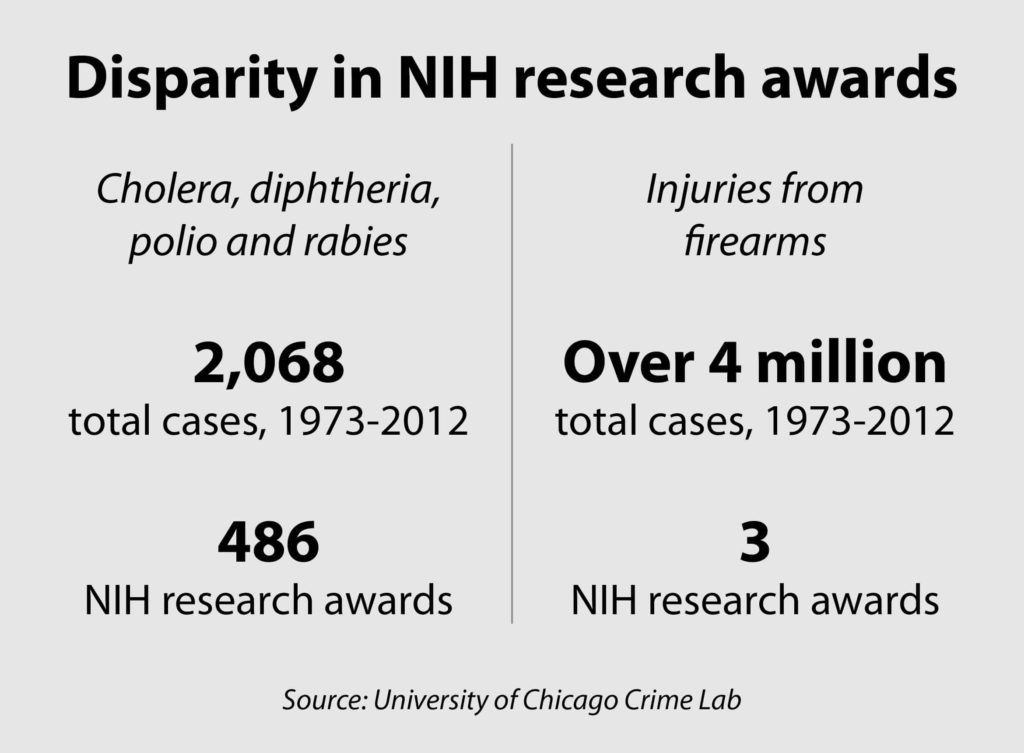 Insights
Insights ‘Knowing Through Crime’: How We Define Gun Harm Shapes How We Research It

Americans know the cycle following unimaginable acts of gun violence well: first horror, then hope, followed by helplessness. Tragedies like the Uvalde and Buffalo mass shootings capture national attention, forcing us to face the prevalence of gun violence in the United States and breeding hope that the horrific shock might spur the country to do whatever it takes to prevent even more mass shootings–a tall order in a country where over 200 mass shootings have already occurred in the first five months of 2022. Then, nothing happens. Hopelessness sets in as we recognize that the political system is unwilling to respond to demands for change—such as background check reform—supported by the vast majority of Americans.
This hopelessness does not just reflect the unresponsiveness of the American political system. It also reflects a more basic problem: we know far less than we should about how to prevent gun violence in the US. In a remarkable meta-study on the impacts of gun policy conducted by the Rand Corporation in 2018, researchers found that much-debated gun policies often lack strong scientific evidence of their effectiveness–a lack of knowledge often attributed to the so-called “funding freeze” on federally-funded gun research ushered in by the 1996 Dickey Amendment. The amendment stipulated that “none of the funds made available for injury prevention and control at the Centers for Disease Control and Prevention (CDC) may be used to advocate or promote gun control.” As its namesake, US Representative Jay Dickey, and gun safety advocate Mark Rosenburg later recognized: “As a consequence, U.S. scientists cannot answer the most basic question: What works to prevent firearm injuries?”

We—two sociologists—had a hunch that this narrative wasn’t wrong, but that it was almost certainly incomplete. After all, while the Dickey Amendment had certainly chilled public health research on gun policy, gun harm can be many things: a crime problem, a public health crisis, an issue of political culture, and a social justice cause—and how gun harm is defined as a social problem will shape how we research it. So, we undertook a study to analyze project abstracts from 1996 to 2016 on gun violence research funded by three major agencies not impacted by the CDC funding freeze: the National Science Foundation, the National Institute of Health, and the National Institute of Justice.
We found a clear pattern: in the federal agencies we studied, criminal justice approaches dominated funded research on gun violence. They treated gun harm as arising from intentional criminal acts, and they emphasized interventions that center criminal justice institutions such as criminalization, policing, and incarceration. As we combed through our dataset, we realized that this emphasis on crime reflected a broader phenomenon known as ‘governing through crime’: pressing social problems are understood primarily as problems of crime, which in turn justifies punitive or risk-management solutions. Punitive responses to homelessness, immigration, poverty and other social problems are all examples of this phenomenon, but in our research, we found that we could extend this insight to gun research, too. We use the term ‘knowing through crime’ to recognize how criminal justice discourses and institutions have come to shape what we know about causes and solutions to gun harm.
In our database, even alternative approaches to understanding gun violence, such public health research, often integrated a criminal justice perspective, emphasizing criminal behaviors, criminal justice policies, or forensic work alongside other factors. While framing gun violence as a problem of crime may help make some research more “fundable” against the backdrop of the Dickey Amendment, it also impacts on how we understand and address gun violence. Not only does it distract from other effective solutions but it creates troubling consequences that deepen inequality. People of color and disadvantaged communities disproportionately bear the brunt of punitive policies, from police killings to mass incarceration. Gun crime policy is no exception.
There were, however, alternatives to ‘knowing through crime.’ While the criminal justice approach to gun violence research dominated federally funded projects, it also provided a framework against which more critical research was positioned. Some studies took a social justice frame to understanding gun violence and emphasized the role of racial, class and gender inequalities and the transformative possibilities of community empowerment among marginalized groups. Another set of projects emphasized the political and cultural factors that shape attitudes and policies towards guns in the US. Both offered powerful alternatives for understanding gun harm–and for moving beyond criminal justice approaches.
While academia might purport itself to be a “marketplace of ideas,” our study suggests that both formal (e.g., the Dickey Amendment) and informal (e.g., the culture of crime) factors have combined to shape which ideas transform into sound scientific evidence—leading us back to criminal justice approaches that often fail to address the underlying causes of gun violence while also aggravating inequality. This doesn’t mean that we know nothing about which gun policies might work better than the ones we have now in addressing gun violence. We can and should pursue policies backed with scientific evidence. But we must also acknowledge that scientific evidence is shaped by the broader political and cultural contexts in which gun policy is debated.
When gun violence urgently erupts into the public consciousness, as it did over the past few weeks, the public often looks to researchers to understand how gun violence happens and what can be done to lessen its toll. Researchers have an obligation to provide scientifically sound evidence about gun policies, but if we hope to move the debate forward, we have to do more: we must think critically and creatively about gun policy and resist the familiar narratives that not only seep into our public consciousness but also slip into our research agendas. This, ironically, was one of the initial promises of public health approaches to guns: to develop evidence-based policies that could generate consensus without galvanizing political divides. That promise, of course, did not materialize: public health scholarship in the 1990s generated a backlash that culminated in the Dickey Amendment. Today, opening up debate about the Dickey Amendment would be a crucial step but not enough: researchers must be unhampered—including by dominant narratives—if they hope to not just inform but also elevate our political debates about gun harm.






























































































